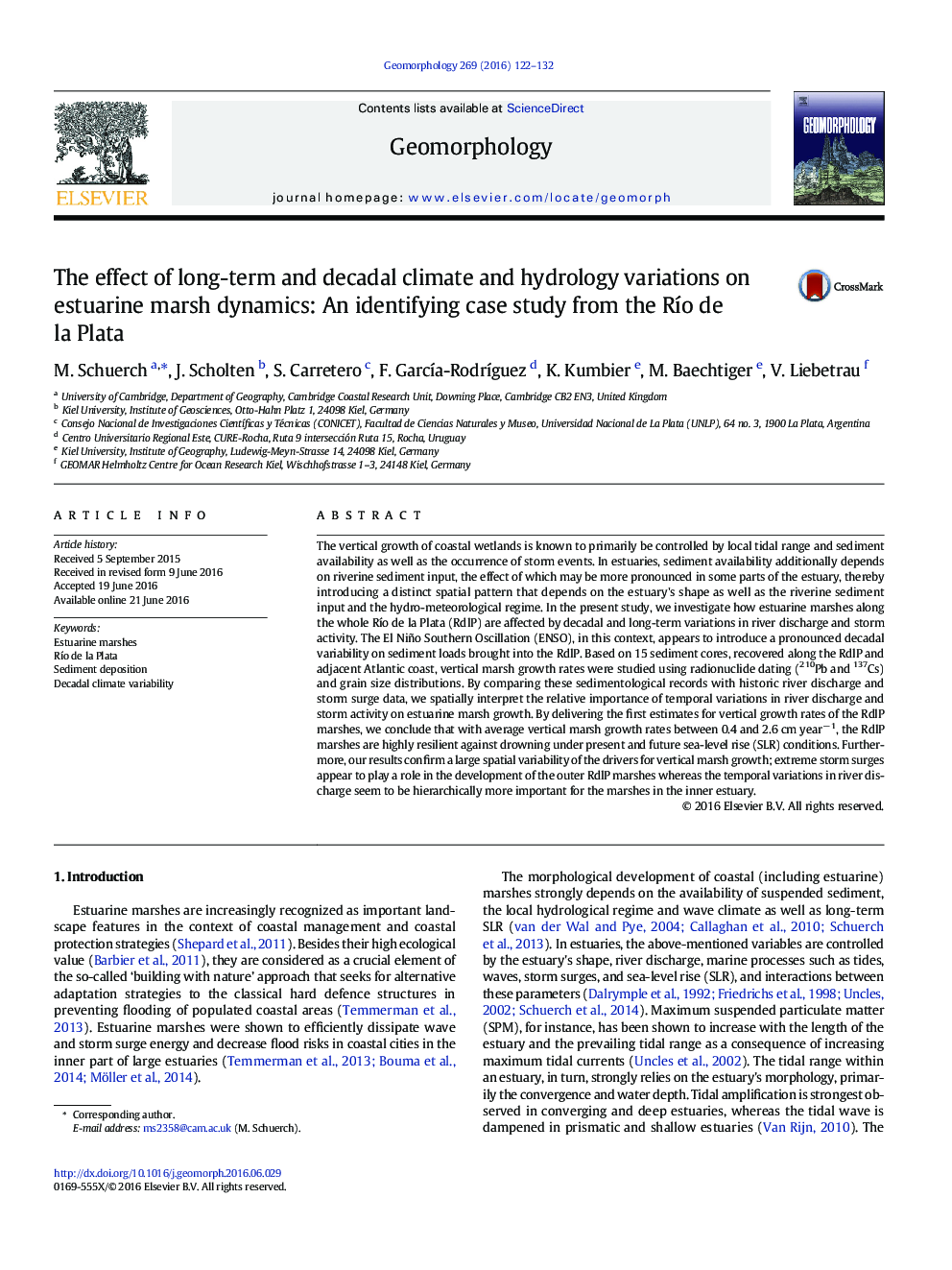| Article ID | Journal | Published Year | Pages | File Type |
|---|---|---|---|---|
| 4683936 | Geomorphology | 2016 | 11 Pages |
•Vertical marsh growth in the RdlP is well above present and future SLR rates.•Drivers for vertical marsh growth show high spatial variability within the estuary.•Deposition rates on the RdlP marshes tend to be higher since the early 1970s.•Extreme storm surges positively affect the growth of the outer RdlP marshes.•Temporal variations in river discharge are more important for the inner RdlP marshes.
The vertical growth of coastal wetlands is known to primarily be controlled by local tidal range and sediment availability as well as the occurrence of storm events. In estuaries, sediment availability additionally depends on riverine sediment input, the effect of which may be more pronounced in some parts of the estuary, thereby introducing a distinct spatial pattern that depends on the estuary's shape as well as the riverine sediment input and the hydro-meteorological regime. In the present study, we investigate how estuarine marshes along the whole Río de la Plata (RdlP) are affected by decadal and long-term variations in river discharge and storm activity. The El Niño Southern Oscillation (ENSO), in this context, appears to introduce a pronounced decadal variability on sediment loads brought into the RdlP. Based on 15 sediment cores, recovered along the RdlP and adjacent Atlantic coast, vertical marsh growth rates were studied using radionuclide dating (210Pb and 137Cs) and grain size distributions. By comparing these sedimentological records with historic river discharge and storm surge data, we spatially interpret the relative importance of temporal variations in river discharge and storm activity on estuarine marsh growth. By delivering the first estimates for vertical growth rates of the RdlP marshes, we conclude that with average vertical marsh growth rates between 0.4 and 2.6 cm year− 1, the RdlP marshes are highly resilient against drowning under present and future sea-level rise (SLR) conditions. Furthermore, our results confirm a large spatial variability of the drivers for vertical marsh growth; extreme storm surges appear to play a role in the development of the outer RdlP marshes whereas the temporal variations in river discharge seem to be hierarchically more important for the marshes in the inner estuary.
